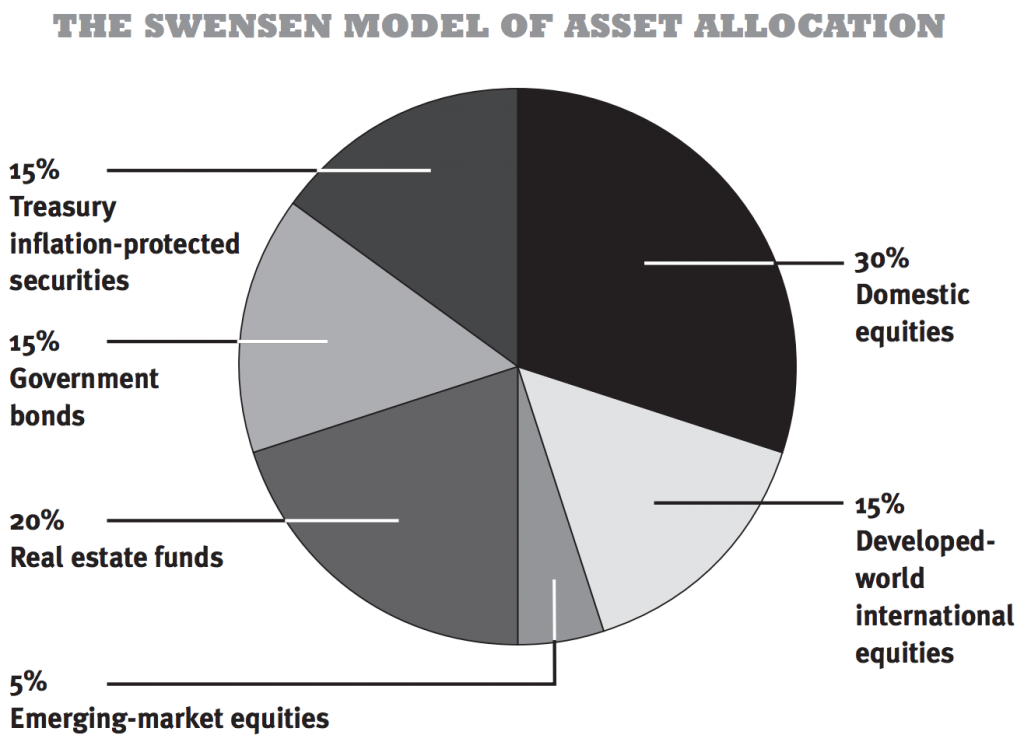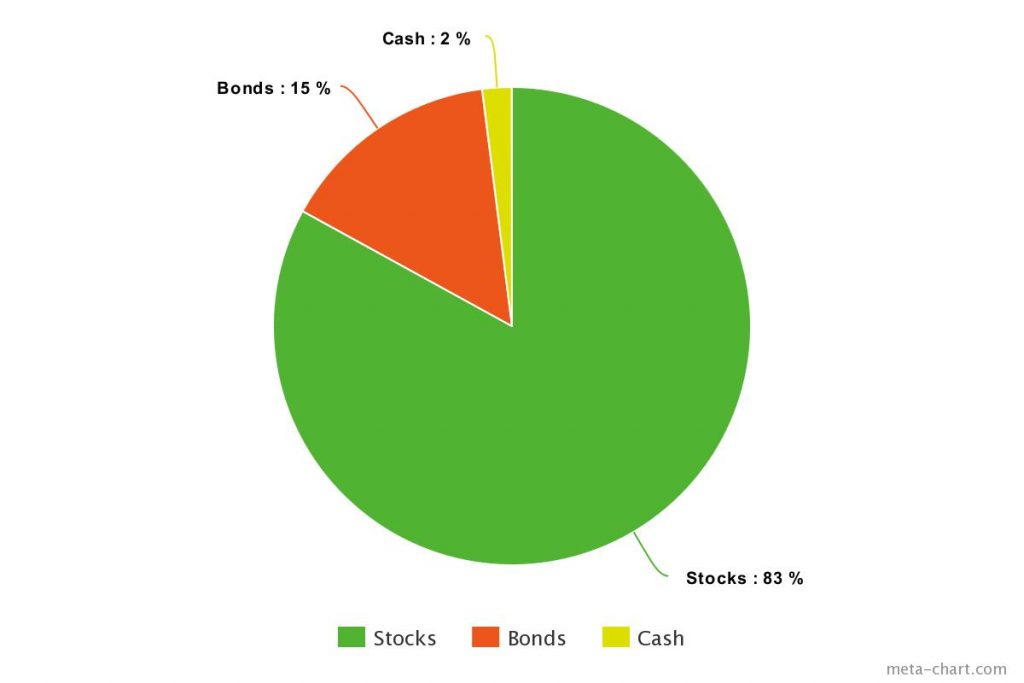Student loans in America average near the $40,000 mark, and it makes it difficult to decide whether to invest or pay off student loans. Because, let’s face it, getting out of debt and saving for retirement is equally as important.
Pay down debt or invest? Factors to consider
There are three elements that determine which route will suit your needs best. These are:
- The mathematical approach: Using math, you can figure out what will be more beneficial – paying down debt or using extra cash to invest. For example, if you have a higher interest rate than what you’re earning on your investment, you might opt to pay off the debt first. But math isn’t the only important factor at play.
- The emotional approach: Having student loans looming over your head sucks, and it’s only natural to want to get rid of it. The emotional decision might lead you to a decision that makes you feel better, even if it doesn’t make as much sense financially.
- A hybrid approach: With the hybrid approach, you do both – pay down debt while simultaneously saving for retirement. But this approach deserves some investigation to make sure your split has the best possible result – we’ll get into those nuances in this article.
But before you dive in, it’s important to understand external factors may affect your decision.
Your personal financial position
A critical factor in deciding whether to pay down your debt as opposed to boosting your retirement savings is the effect the move will have on your finances. Things to consider, include:
- Emergency savings: It’s important to have money tucked away for a rainy day. These funds need to be instantly accessible and are used in the event of a financial crisis. While financial pundits may recommend a good three to six months’ worth, our founder Ramit Sethi considers 12 months’ worth of emergency savings a safer option. Your emergency savings need to be topped up first before you can start paying additional funds towards debt or investments.
- Payments up-to-date: If you happen to be behind on any of your debt, it’s better to get back on track before adding money to an existing installment. This is because those arrears can wreak havoc on your financial standing with your bank and other service providers. It can also wreck your credit score.
- Your basic needs are met: While long-term plans such as debt repayments and retirement planning benefit from added payments, it’s important that immediate needs are seen to. This includes housing, food, transport, and utilities.
- You still have fun money: When you’re not able to do any of the things you love, the road to financial freedom becomes a dreadful journey. Choose something that you’re happy to save some guilt-free spending on. This amount can increase as you start ticking financial goals off your list.
The amount of your debt
The average student loan debt of $40,000 might seem doable, especially if you’re earning a decent paycheck. But let’s consider those specialist degrees where your student loans creep up to the hundreds of thousands of dollars. Suddenly this amount seems like a behemoth and it might not make sense to throw money at anything else until you get this huge number under control.
The flipside is that with all those years you devote to paying off your student loans, you could have built up your retirement savings. You may want to predetermine a goal that will give you some wiggle room to focus on investments. For instance, you might set the goal that once you reach the halfway mark of your debt, you’ll start contributing to your retirement accounts.
Remaining years
If you’re right at the beginning of the loan period, for instance, fresh out of college and working that first job, your priorities might be different to someone close to retirement.
The cost of your finance
There are only a few instances where the debt interest rates are lower than what you would earn on an investment, but it happens. When it does, you want to make sure that you’re getting the best value for money. A low-interest rate student loan might just be better off with that minimum installment if you haven’t maxed out your 401(k) just yet.
However, if the interest you’re paying is on the higher end, you might want to consider paying your debt first before increasing your investment contributions.
Student loan options – which one’s yours?
Fast-tracking your student loan payments can save you a stack of money in the long term.
For instance, an extra $100 goes a long way to clearing off the interest portion faster.
Here’s an example. Let’s say you have a $10,000 student loan at a 6.8% interest rate with a 10-year repayment period. If you go with the standard monthly payment, you’ll pay around $115 a month. But look at how much you’ll save in interest if you just pay $100 more each month:
| Monthly payments | Total interest paid | You save |
|---|---|---|
| $115 | $3,810 | $0 |
| $215 | $1,640 | $2,169 |
| $315 | $1,056 | $2,754 |
| $415 | $728 | $3,027 |
It’s worth knowing that there are a number of options open to those who wish to pay off their student loan debt.
Understanding the type of loan that you have (or are planning to take on)
There are three student loan types to consider: federal, private, and refinance loans. Each has its own set of rules and carries a few pros and cons.
A big plus across the board, however, is the fact that you can pay extra or make prepayments into an education loan without penalty charges. How’s that for an incentive?
Federal student loans
The government makes provision for loans for students in order to access higher education. Instead of students borrowing from banks and other financial institutions, these loans are entered into with the federal government.
There are three types:
- Direct subsidized – suitable for students who need financial assistance.
- Direct unsubsidized – no need to prove financial need, available to all applicants.
- PLUS loans – these loans are for graduates and professionals to cover the shortfall of tuition not covered by other programs. You will need a good credit score, and these loans have a higher interest rate than other federal student loans.
Positives include that it’s easier to apply for a federal loan and in times of hardship, there are deferral and forbearance options. They also tend to offer lower interest rates as the rates are controlled by the government.
It’s important to note that these loans carry costs and charge an initiation fee of 1.057% to 1.059% for regular student loans and 4.228% to 4.236% for PLUS loans.
Private student loans
There are a number of private student loan products offered by banks and other institutions. What’s great about these loans is that they can tailor the loan type to suit the need, for instance, there is a loan for bar exams, another for medical school, and even a product for those with bad credit.
These loans tend to be a little more costly and while there aren’t initiation costs, the interest rate is not fixed by the government. This means that the rate can be substantially higher than that charged on federal loans.
Applicants will also need to show a good credit score. It’s also worth knowing that these loans aren’t part of any government forgiveness programs. So why get it at all? Turns out these loans are great for those who have high study costs.
Student loan refinance
High-interest rates on a student loan are a real kick in the teeth and what better way to get your own back than by opting for a product with a lower rate? Student loan refinance products are offered to students who have a decent credit score with the aim of reducing their interest rate. This is not a great option for those with federal loans, however, as you will lose the federal protections and benefits should you opt to refinance.
Your retirement options
Saving for retirement is an essential component of building wealth. It also happens to have tax and other benefits that you simply can’t get from regular savings or investments. But how do you make the decision to pay your future self when you still have debt? It will be easier to unpack that mule of a question when you understand retirement investment options a little better.
Roth and Traditional IRA
These retirement plans allow you to contribute to your retirement savings up to a certain threshold per year. In 2020 and 2021, this annual threshold was $6,000. That means that if you’re worried about paying off debt or saving towards retirement, first check that you’re not already maxed out on these contributions.
It’s worth noting that a Roth IRA also has an earnings limit of $140,000 for individuals.
401(k)
There is no cheaper way to fund your retirement than a matched 401(k). Read that again. If you have extra cash lying around and you’re not maxed out on this, you’re losing out. Let’s explain.
A matched 401(k) means that your employer will match your 401(k) contributions either fully or partly up to a certain percentage. Now just bear in mind, there is a limit of just under $20,000 per year, or 100% of your salary, whichever is the smallest.
How to pay down debt while investing
Know what your financial position is
Okay, we’ll admit it, you’re going to have some work to do. But a little bit of effort now will save you a ton of financial admin in the future. There are a few things you need to know before you can make a decision about whether to pay student loans or invest.
- What is my outstanding debt? You want to check the installments, when your last installment is due, and what the settlement amount is. This may seem like a no-brainer, but there’s a surprising amount of people who prefer to play ostrich to their debt. They’re either scared that the debt is more than they thought, or they’re embarrassed to admit that they’re probably net negative (which means their debt is more than their assets, yikes!). But here’s the thing, no one cares (or will for too long). Also, it’s not going to go away just because you don’t want to think about it.
- Which item has the highest interest rate? Who knows, your student loans might be the least of your concern. Check credit card and personal loan details too to make sure you’re focusing on the right debt. If these are off the charts, you might be a good candidate for debt consolidation.
- What am I paying each month? We want you to be conscious about your spending. You need to know what your fixed expenses are, what you’re spending on savings and investments, all your fun money, and yes, it’s important to own up to those monthly subscriptions that you haven’t used in over a year.
Use the envelope system
An envelope system is a budgeting tool that allows you to allocate all your money to payments, savings, and such. It works on the premise that, if you had cash, you would stick your dollar bills into various envelopes and then mail them off to cover the bills.
An envelope system works well because you decide the categories. While housing and utilities are a given, you can also have an envelope for lattes, entertainment, etc. Sure, you can decide that the biggest chunk of your salary goes to Target, but the point is to cover your expenses and bills, put aside money for saving and investing, and still have some fun money.
When you’ve used all your entertainment money, the idea is that it’s done. When the envelope is empty, that’s when you stop. Not only will this allow you to allocate more effectively, but it will also stop the frustrating overspending that seems to befall us when we’re low and there’s this great pair of shoes… stop!
Now, here’s the great part. You can have an envelope for additional payments to your student loans AND you can have an envelope for investments.
Choose investment options that suit your pocket
When you have to ask the question, “Should I pay off my student loans or invest?” chances are good that you’re not interested in spending a ton of cash on fees and expensive investment products.
You have two enormous financial goals and the quicker the better. That means you’re going to need options that will allow you to do both.
So out comes Ramit Sethi’s Ladder or Personal Finance. It’s a gamechanger when it comes to building wealth and vanquishing debt. And here’s how it works:
- Get that 401(k) going: It’s cheap investing and your future self will thank you.
- Slash the high-interest debt: High-interest debt just sticks around for too long. Boost your repayments to get this down fast.
- Contribute to a Roth IRA: Retirement is cheap investing, oh wait, we said it already. But hey, if it’s true it’s true.
- Max out your 401(k): You want to get the most out of this product!
- Diversify your portfolio: Start looking at other investment products such as stocks, CDs, and bonds.
The bottom line
Let’s face it, student loans are a drag. It’s only natural to want to get rid of them ASAP. But here’s the thing, we’re also getting older. Investing shouldn’t be relegated to some future date when things are peachy and the debts are done.

Do you know your earning potential?
Take my earning potential quiz and get a custom report based on your unique strengths, and discover how to start making extra money — in as little as an hour.
Should I Pay Off My Student Loans Or Invest? Here’s How To Decide is a post from: I Will Teach You To Be Rich.
Via Finance http://www.rssmix.com/


